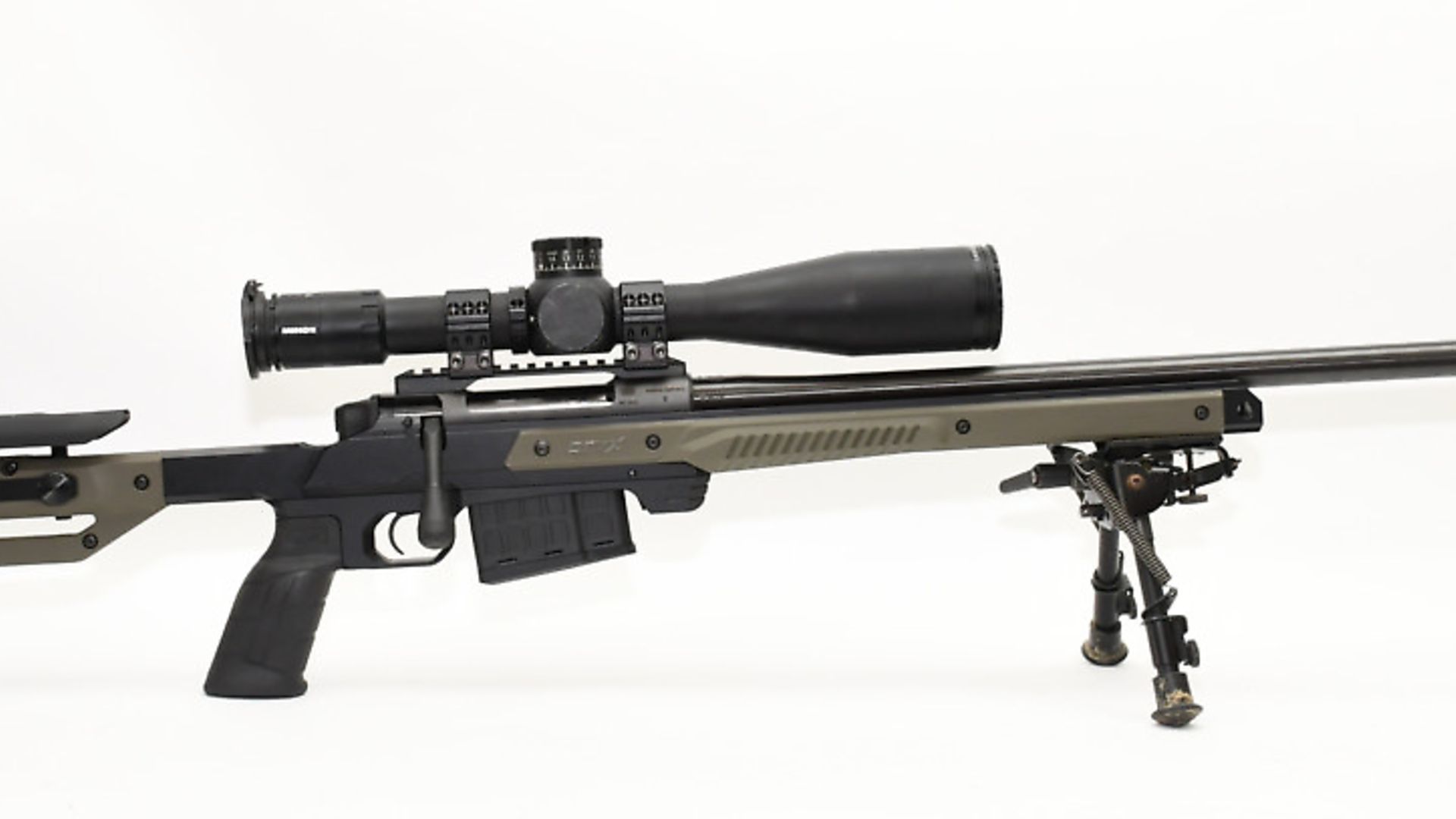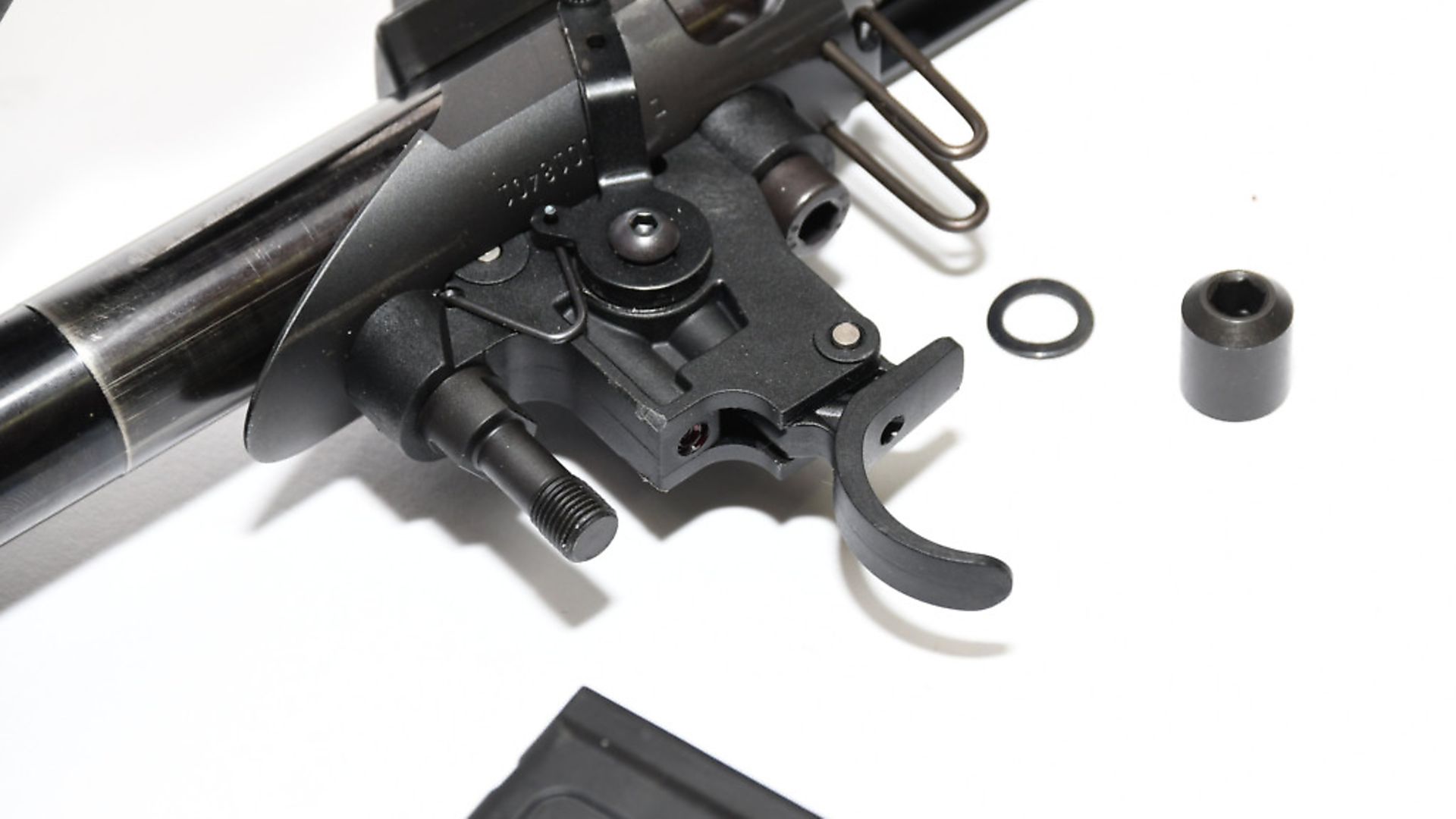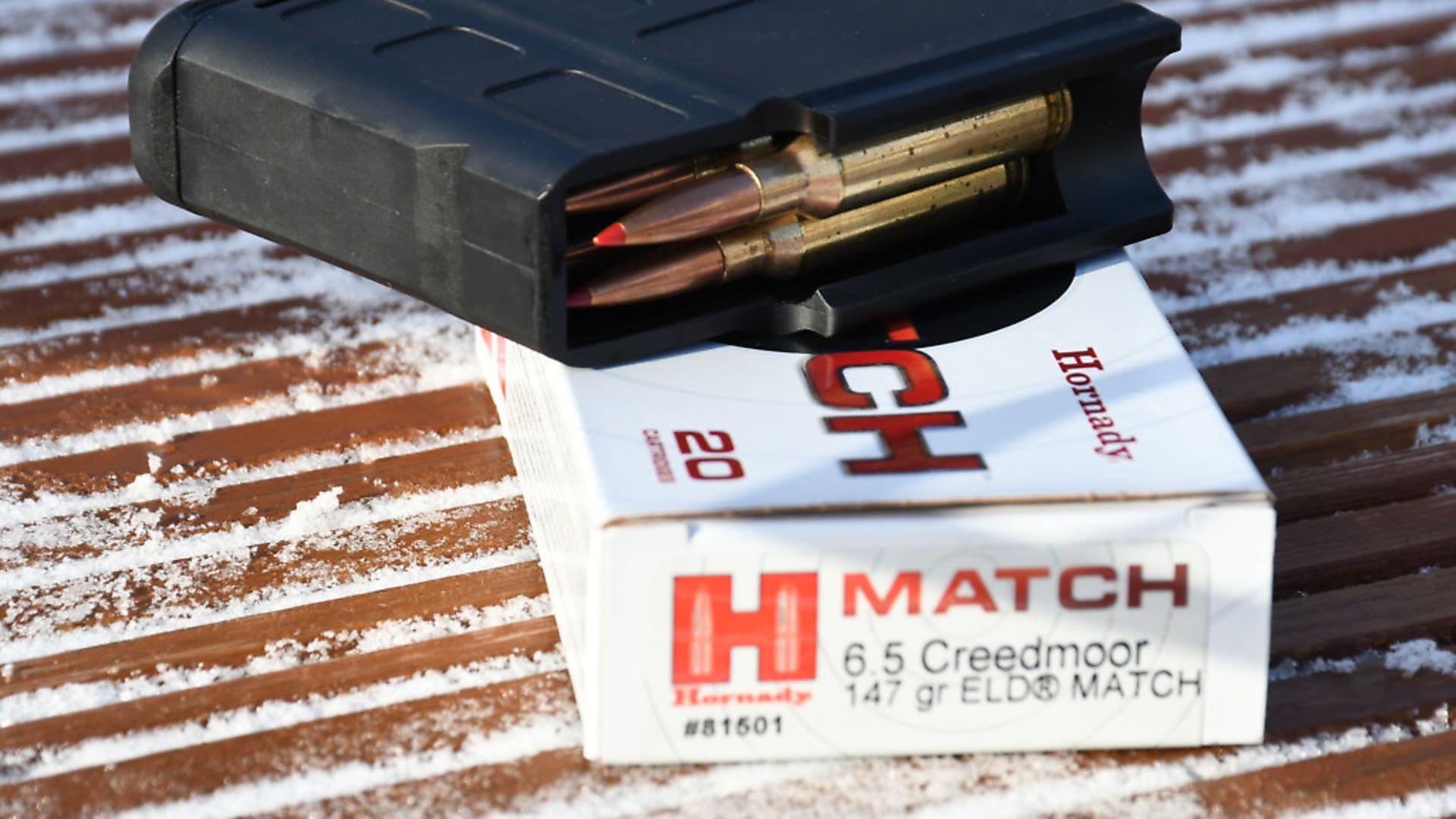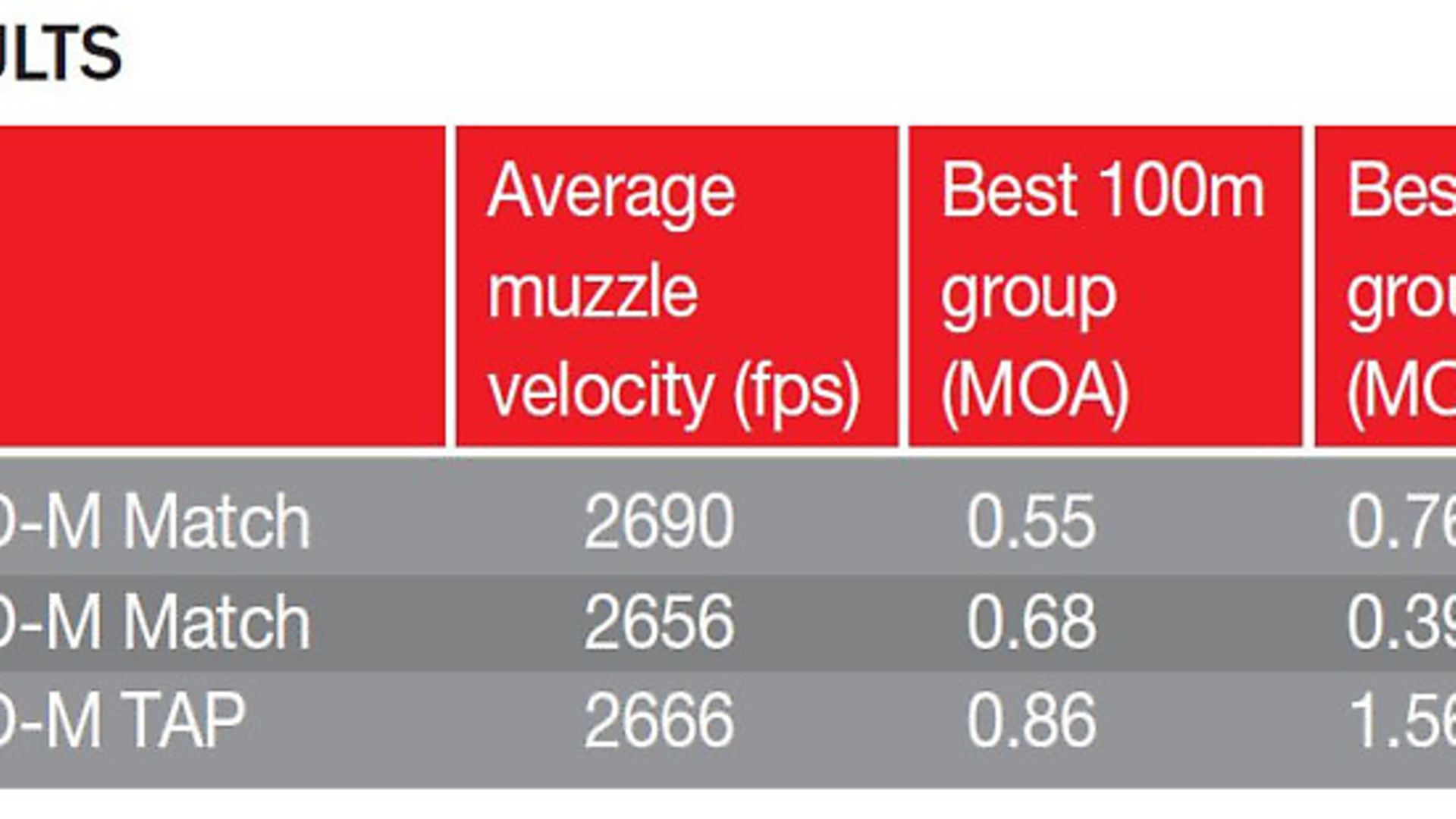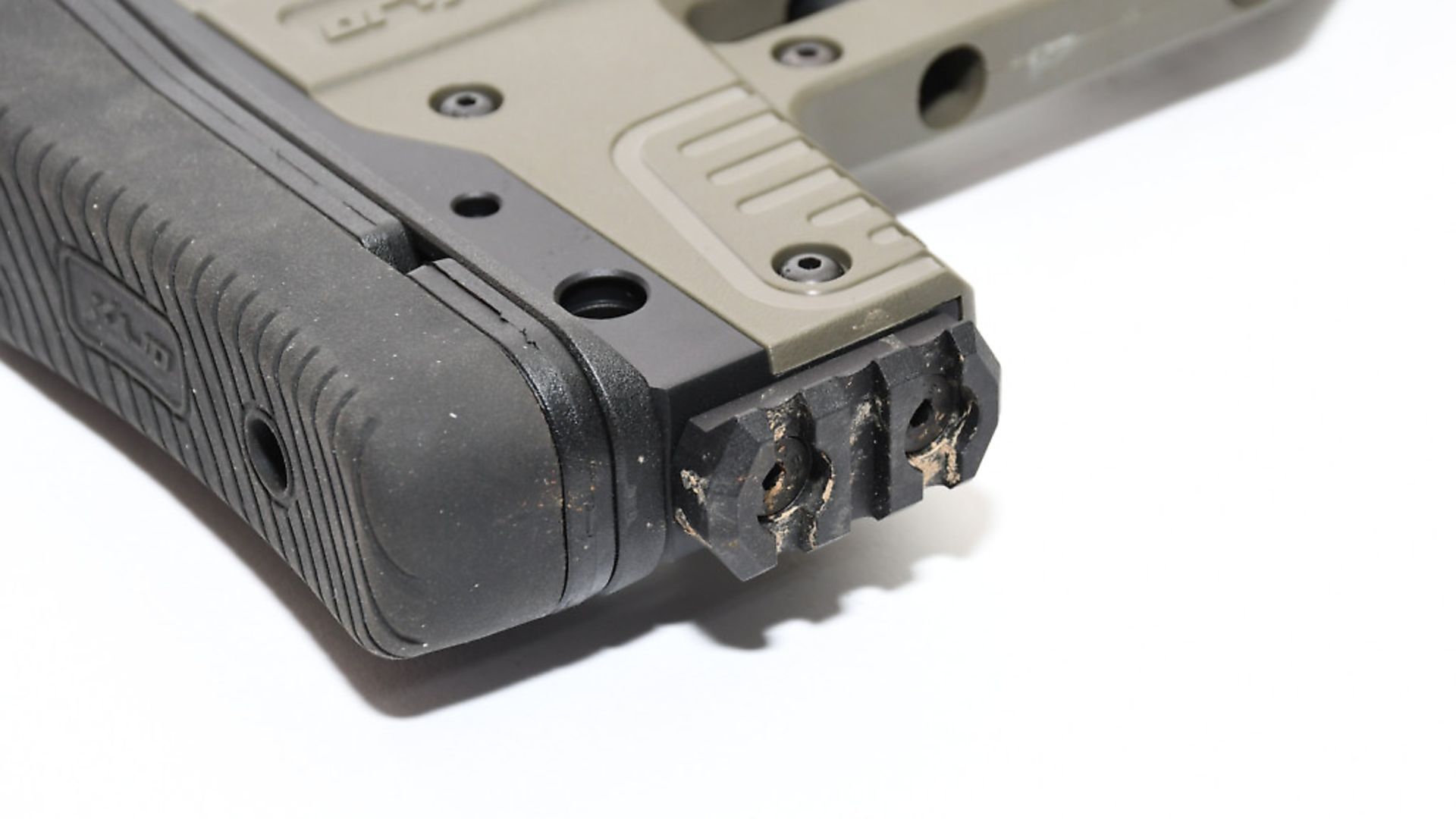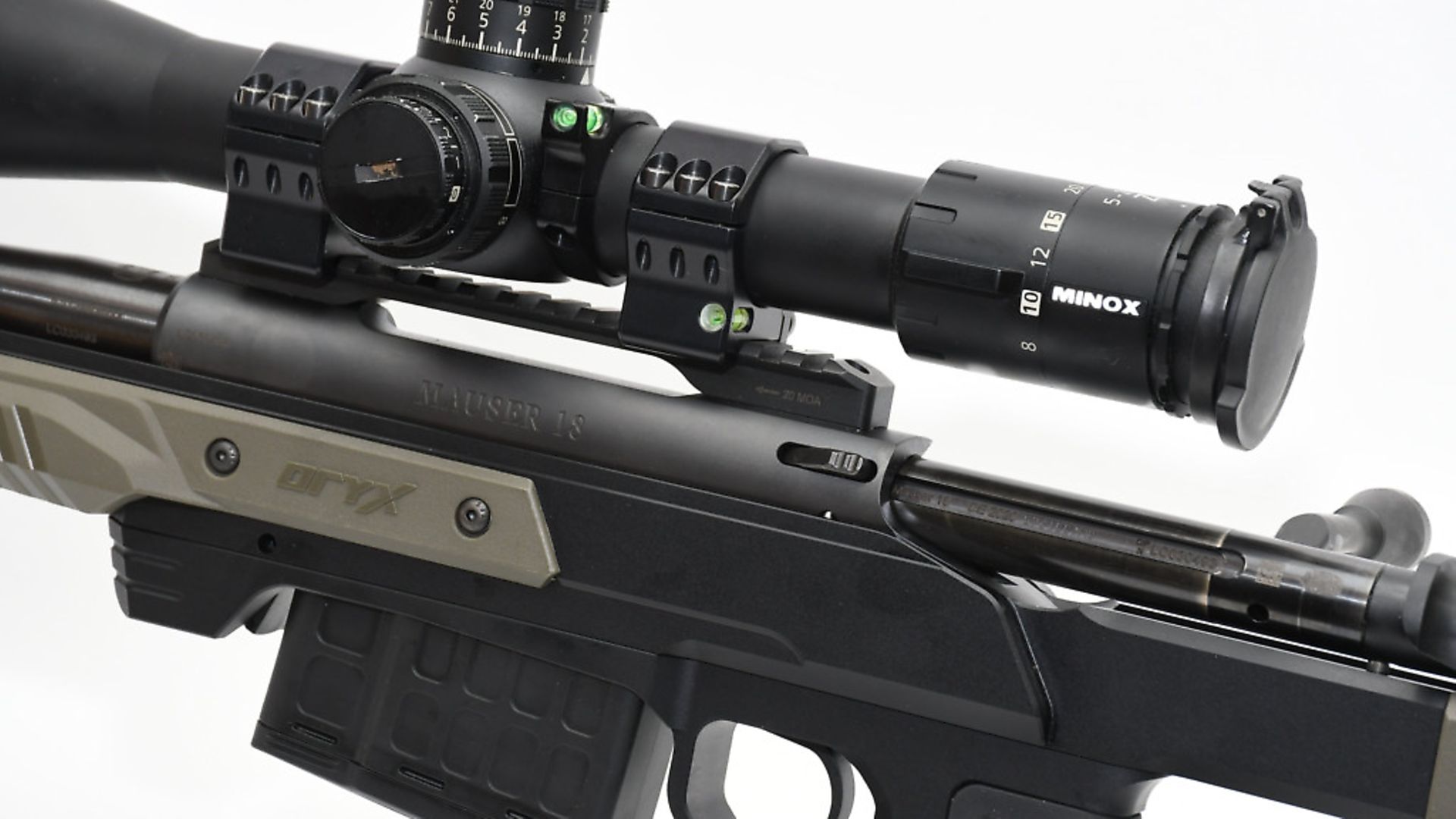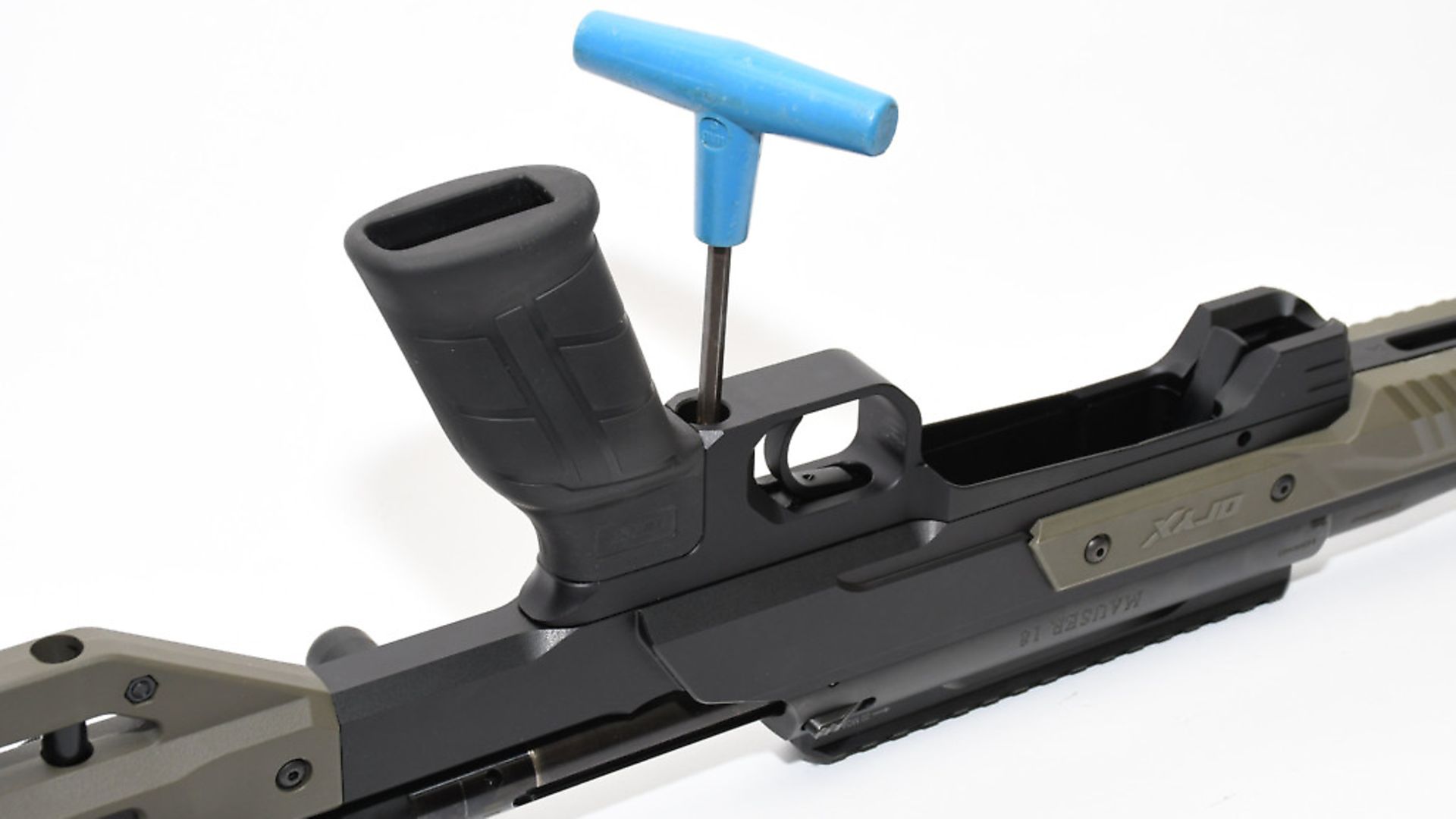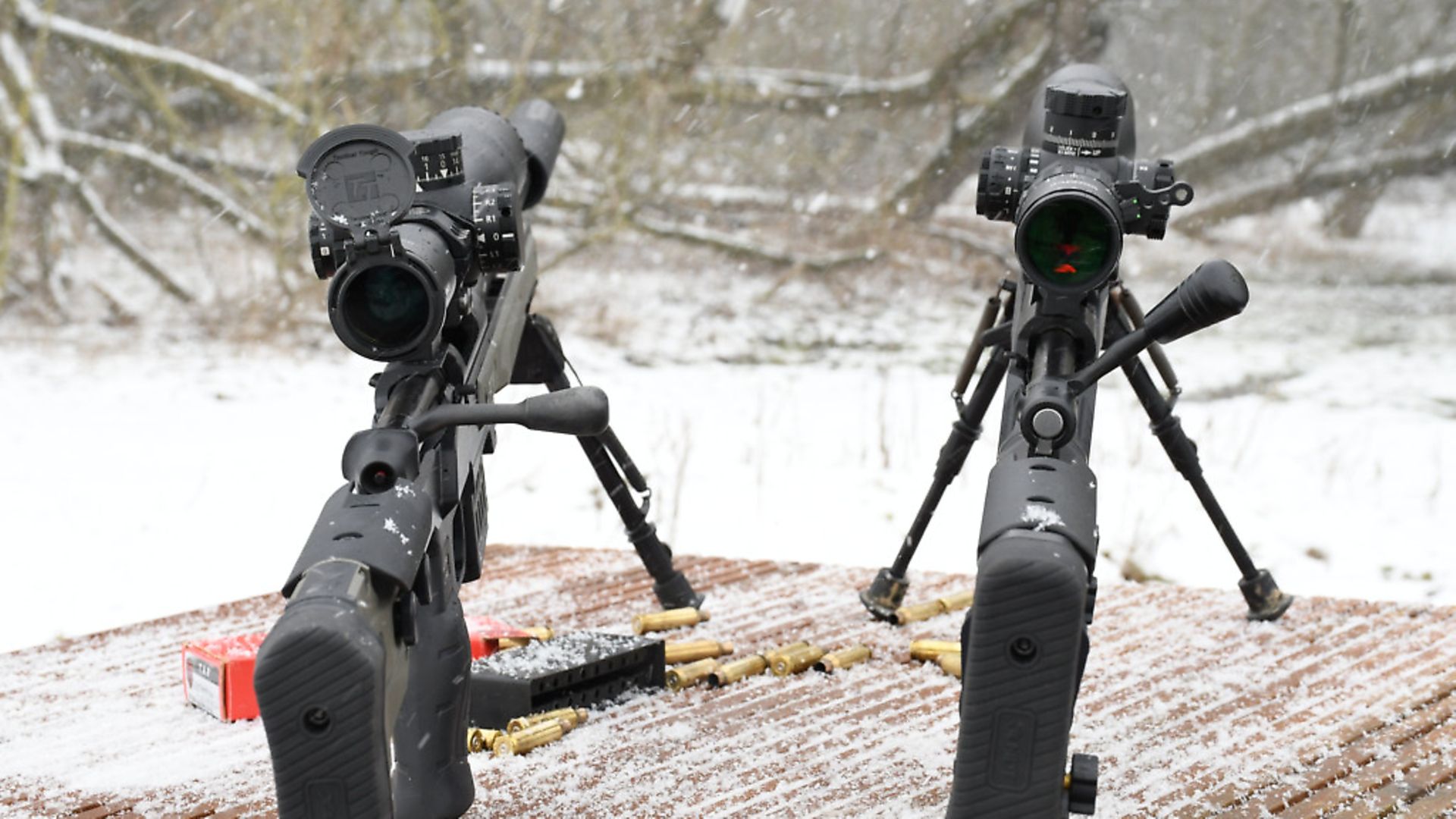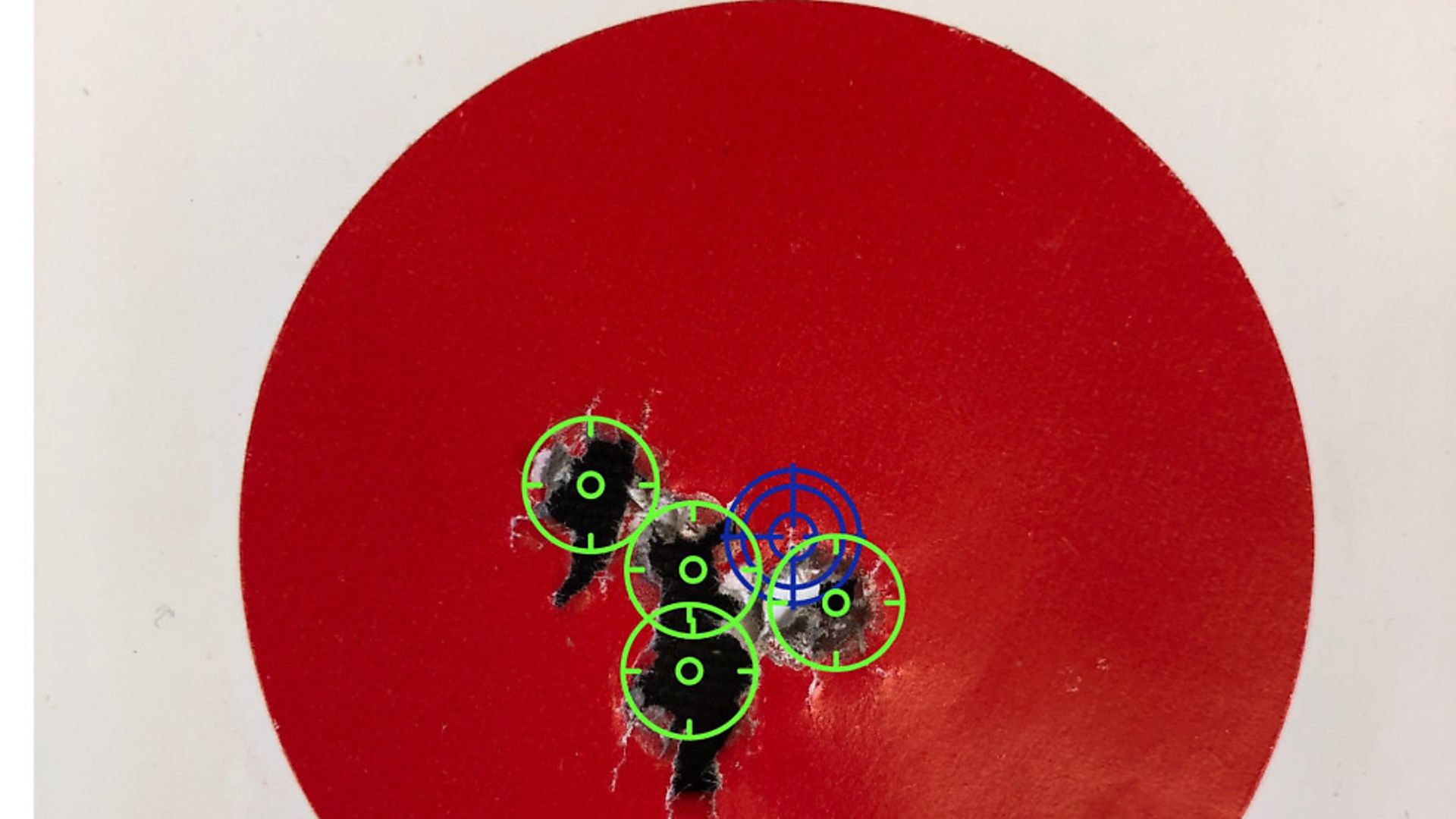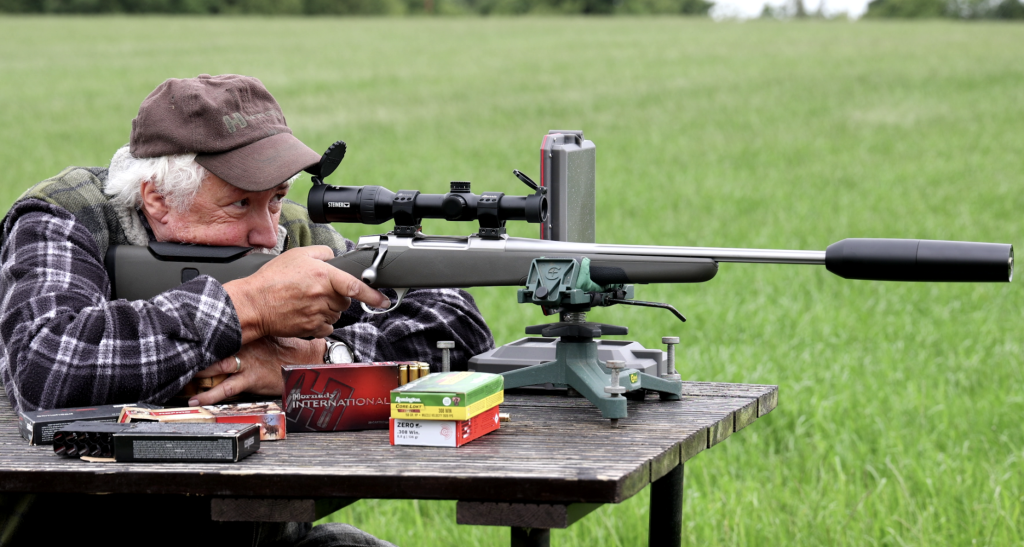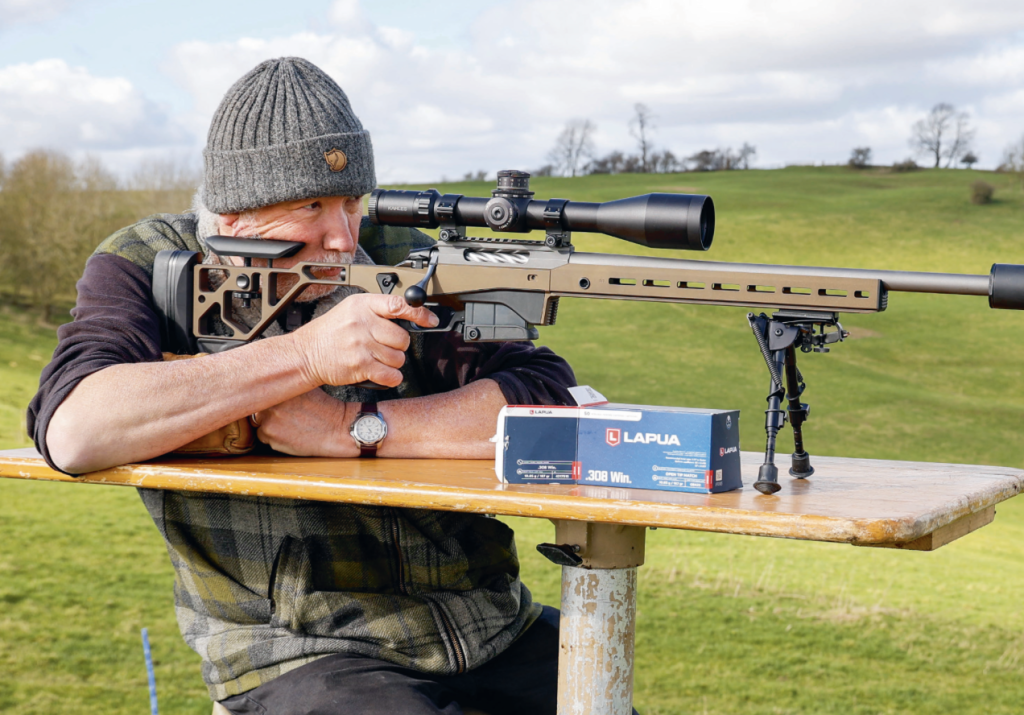Mauser M18 Chassis in 6.5 Creedmoor – test & review
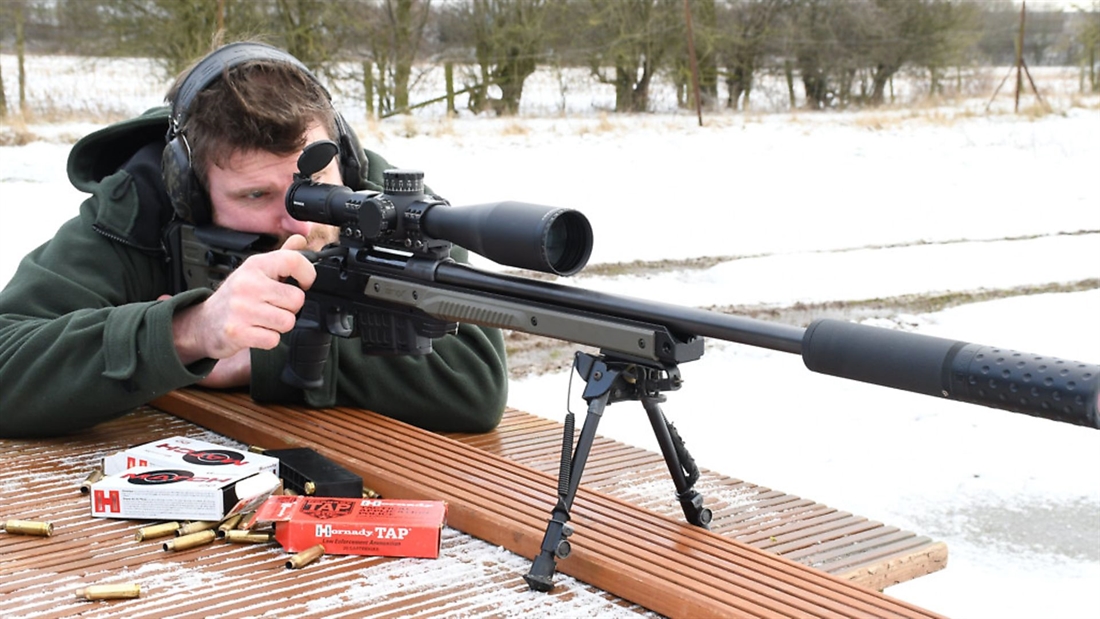
Mauser goes “tacticool” with a remake of the M18; Chris Parkin reviews the Mauser M18 Chassis in 6.5 Creedmoor
Mauser M18 Chassis in 6.5 Creedmoor – brief overview
Likes: Refined bolt character; Twin column magazine; Trigger consistency; Thermal stability of the barrel
Dislikes: I’d prefer a slimmer cheekpiece; Perhaps Mauser might limit the bolt stroke by 10mm?
Verdict: I can pick small faults with any rifle but this is one I enjoyed shooting, and feel confident with the intention to push beyond everyday short range review opportunities using factory ammo. Good as factory loads are, a rifle this stable starts to want more!
Mauser M18 Chassis in 6.5 Creedmoor – in-depth test & review
On paper, this is already a very interesting rifle, as Mauser have seemingly steered clear of the target and tactical markets so far. Although Blaser have offered heavier LRS and R8 GRS rifles, intended for more precision and long-range work, it wasn’t until the Sauer 100 Fieldshoot and Pantera arrived that the German powerhouse seemed to be spreading their wings into a world other than hunting.
The Fieldshoot was an interesting rifle that spanned the hunting and varminting markets, yet the M18 Mauser has clearly been directed into the world of ‘chassis’ and ‘long range’ with the heavy metallic architecture and 10-round magazine. How well have they done it?
When the M18 first arrived three years ago, I was rather taken with its superbly functional simplicity and excellent ergonomics, both of which breathed centuries of Mauser know-how into a fundamentally accurate sporting rifle, offering a really viable alternative to their premium offerings. I remember at the time feeling they had returned to the core ‘everyman’s rifle’ ethos and had done a very good job of it, although I’m still surprised it seems to remain something of a sleeper in the market.
In the target and long-range world, where some manufacturers clearly seem a little out of their depth, Mauser took the simple steps of adding a heavier barrel, screw-cut for moderator or brake, and slotted it into a well-known MDT Oryx stock. The details seem simple, but they also paired this three-lug, push-feed bolt-action that fed from twin offset column magazine to a proprietary 10-round unit. First inspection on unboxing was quite positive.

the build
All Blaser Group barrels are cold-hammer-forged and this heavy 22mm diameter Mauser variant shows a parallel profile through its 620mm/24” length barrel back to the action, with just a slight swell into the chamber reinforce. As was expected, threads and crown were impeccably finished with a thread cap supplied to keep them covered.
Mauser also offer a brake as an accessory, along with a mirage band stud, should you desire.
The barrel has a polished finish and matt black action.The supplied 20 MOA Picatinny rail overhangs the barrel, offering plenty of scope mounting real estate, with four T10 Torx screws securing it to the cylindrical action. This seems a bit meatier than the Sauer 100, although it has a similar breech ring arrangement causing the abutments to lock the bolt’s three lugs home from a 60° throw. It’s 34.8mm in diameter, offering a recoil lug slot recessed on the underside where it matches with the inlet chassis showing two slight ridges, forming a V-Block type bedding arrangement.
Two studs located on the underside of each action bridge slot through the stock with Belville washers and 5mm Allen nuts to secure in place. No bedding stress was detected from the barrel rising in the forend when slackening the rear action screw and everything has an air of functional simplicity with dedicated design and machining, rather than parts bin selection.
No obvious adjustment is advertised on the underslung trigger at the rear, showing a curved unserrated blade with single-stage break at 715g. Closer inspection shows an Allen key socket for weight adjustment, but I left it alone. No advertised weight range is suggested on the website, but I found it crisp and consistent to shoot, so I was more than satisfied. There is a further Allen screw behind the blade, which I suspect is the sear engagement but this was threadlocked. I have found this basic trigger deign deceptively reliable and consistent to use on the M18/.243 sporting rifle I’ve been running for three years.
I have used most of the modern competition, including the M12, and I actually think the M18 has the fastest turn bolt action in the business. In .243 and .308, it’s never been anything other than lightning-fast when cycling, coupled with the smooth feeding detachable polymer mag, which also accepts top loading as well as single rounds dropped in the ejection port.
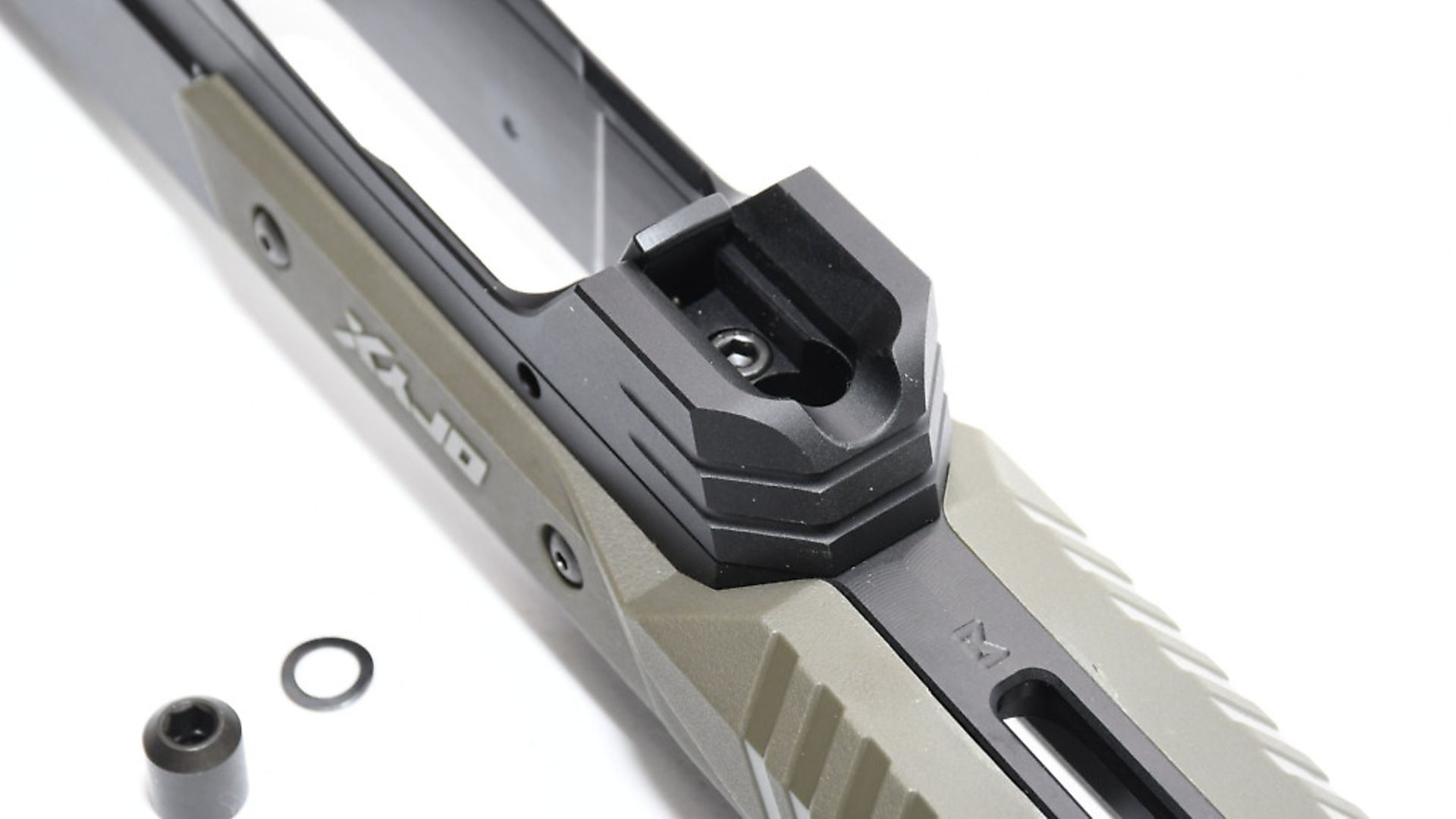
Great ergonomics
Now, with a bolt that good, can it be made better on a precision rifle? Well, no, not in my opinion. The longer 80mm handle with 20mm teardrop is actually a little longer than I would have preferred, but the standard ball-ended unit is just so good and neither design seems capable of jamming. 60° lift with the handle standing out straight, perpendicular to the right side of the action, is one of the few things I will say is the ultimate in rifle design and for me, no bolt matches it ergonomically.
This long handle allows the flick of the back of the fingers to open the action with ease. There’s plenty of primary extraction and when withdrawn along its 114mm stroke, it flings the empties out with ease. One thing I will say is that this 20mm diameter bolt shows just one raceway, interacting with the left-side release catch that dictates full travel length and prevents rotation. Just to note, the low-slung long travel bolt doesn’t hit you on the nose when cycling the action.
The ejector is a sprung plunger and a full extractor claw is shown. A hooped magazine spring descends below the rear of the ejection port and the right-side three-position safety catch locks the bolt when fully rearward, with bolt operation on safe in the centre and fire forwards. The short catch is operable silently and nestles in close to the stock to prevent snagging. No unrequired serration or facets are applied to the mechanics, just a discreet Mauser logo, I like the look of it – it’s very understated, with a name that breathes an old-world reputation into a very modern design.
Barrelled action mechanics aside, chassis are what seem to generate the most interest and I have been relentlessly questioned about where I got this one. Well, it’s an MDT Oryx specifically inlet for Mauser, and what a pairing it is. Small features such as engraved markings for the safety catch have been added to the modular, functional aluminium build.
The forend is 320mm long, fully floating the barrel in all scenarios with an M-Lock underside rail for accessories as well as a conventional stud for Harris-type bipods. Quick-release sling anchors are inset either side of the tip for a biathlon sling and slim dark green polymer inserts are inlaid on the sides for a warmer touch in cold weather, which also stops it looking slab-sided.
We now reach a barricade stop under the front of the action ahead of the magazine well. At 32mm tall and 44mm wide, the forend should slot through most competition barricades, with the minimal taper broadening to just 50mm at the stop. The underside magazine well shows a single release catch at the front in a slight groove, so easily accessed with bare fingers or heavy gloves without any chance of catching it on support structures.
There is plenty of space in the trigger guard for gloved fingertips and although wide at 22mm, it shows 45° chamfered rear edges to avoid snagging. Streamlined details like these impress me, as I see the opposite commonly offered as some kind of false safety measure rather than improved and effective operation.
AR15 options
Reach to the trigger blade from the throat of the underslung AR-15 styled grip is 70mm, and, of course, that can be changed to your preferences with aftermarket parts. I like the grip more than most; the ambidextrous firm rubber unit was comfortable and although offering a shorter reach to trigger, at least it was a raked grip, not a vertical one. Although they have some merits in some competition circles, I’m not a fan and for general prone, longer range or benchrest shooting, this swept design suits the gun better.
I liked the squared stock extension beam. No sloppy buffer tubes can be seen here – just a solid bar with chamfered edges before the outer polymer skin (again a tasteful dark olive colour). There is an adjustable comb on top with a slotted nose for bolt operation. It offers 30mm of vertical travel and is identical in its 40mm width and broad radius shape to the Howa’s ‘ACC’ unit from MDT.
Were the gun mine, I’d alter this profile here too; it is wide with more jaw than cheekbone contact, requiring the head to roll for cheek weld, but you can’t please everyone. The twin adjusting columns are solid with circular 19mm clamping screws that can be swapped either the left or right of the rifle to lock it in place.
Unlike the bulkier polymer ones on the ACC, the Oryx doesn’t foul the cheekpiece so there is less likelihood of losing them – they only need a slight loosening to release the mechanics. This is important as the cheekpiece needs complete removal from the stock to remove the bolt and there are no position markers so you might want to add your own. This isn’t a criticism, it’s a fact of life on a low-profile rifle that maintains such low bore line and subsequent linear recoil into the shoulder, minimising muzzle flip.
An 80mm long bag rider extends below the stock. Its polymer skin is slotted for grip as a butt hook and shows a short length of Picatinny rail for a monopod. Further bilateral QR stud anchor points are machined into the stock, with a third fixed screw-in stud that can be swapped to either side. The recoil pad is flat with slight ribbing for grip – no sponginess for recoil absorption and great feel when loading against the bipod’s feet.
Length of pull spacers can be added, and although these aren’t as fancy as those with adjustability, they go the alternate route of well-designed core functionality. It’s 36mm wide and 127mm tall with radiused edges to avoid fouling on clothing or digging into you when shooting from compromised positions. It’s quite short but adding more spacers will soon sort that out; just one was fitted to my demo rifle.
Field testing
I like the Oryx’s look and simplicity – the solid feel on this heavy barrelled rifle makes it more suited to long-range as the name suggests. I fitted a Wildcat Evolution moderator and Harris bipod along with a Minox ZP5-25×56 scope. Unusually for a single issue, I ran two outwardly very similarly rifles on the same days, offering me a great opportunity to compare and contrast simultaneously, without necessarily choosing a winner.
I used the same ammunition in the same weather on the same targets yet only one convinced me I wanted to take it to the next level and shoot it more. So many people ask me what’s the most accurate, and on this occasion, these two demonstrated the perfect reply as neither was significantly different at paper punching holes (other than the slightly shorter Mauser barrel which offered a few fps less). I think either will impress any buyer. But which one would I choose?
From the bench and prone, the Mauser handles with more stability, due to the lower profile to the surface with wraparound support from the non-firing hand on the hook or bag rider. The grip alone dictated the Howa needed a higher bipod position. Recoil was minimal with a moderator and small cartridge with linear, if slightly canted, head position behind the scope. I would definitely add a narrower cheekpiece. Spotting shot impacts with little recoil was simple and the bolt operation, although slightly longer in stroke length than required, was fluid.
Single rounds dropped into the ejection port would chamber without meplat damage and additional rounds could also be clipped down into the mag without removal. If removed and re-inserted, the sprung front latch was quiet but secure without any issues. Trigger pulls were consistent, perhaps 98% crisp with a well-specified overtravel of 3mm at the blade tip.
Moving prone was my preference but a bit limited given the weather conditions; it certainly proved the rifle was easy to wipe clean and also resisted corrosion when water spots were left on it. Performance on paper at 100m offered assured sub-0.75 MOA performance, and at 200 was floating around the 0.5 MOA mark, but I felt I was losing out to odd rounds degrading a good core group. Hopefully, handloading for the M18 will push the ranges and overall performance even further.
I shot other improvised seated and standing positions, with and without rest or bags, and liked the heavy barrel’s stability. It was consistent beyond 20-shot strings. Blaser Group hammer-forged barrels are incredibly trustworthy. The flat forend underside, solid barricade stop and long bolt handle all helped enable action cycling at speed without disruption.
A 60° lift might need more force versus a 90°, but with more space away from the scope and with better ability to avoid a fist-sized grip nudging the rifle, all characteristics blended into a homogenous feel of balance. I feel bad comparing two rifles so directly but it’s hard not to and in fairness, the Mauser is 30% more expensive. I prefer the Mauser stock inlet system, bedding without any action stress, but the Oryx suits my preferences a little better. The Mauser is refined in feel and the name certainly carries a reputation for sporting excellence.I thought they might get this wrong, but they most certainly have not.
Specifications – Mauser M18 Chassis in 6.5 Creedmoor
Calibre: 6.5 Creedmoor (.243, 6XC, 308 Win. Also available)
Overall length: 1100mm/43”
Weight: 4.5kg/10 lbs
Stock Material: Laminate with adjustable cheekpiece and recoil pad
Magazine capacity: 10+1
Trigger: Single stage, 700gr (1.5lbs)
Length of pull: 345mm/13.6” (inc. 1 spacer)
Barrel length: 620mm/24”
Price: £2,105
Contact: Blaser Group Limited | 01483 917412 | www.mauser.com
Wildcat Evolution Sound Moderator | www.wildcatmoderators.co.uk | 01905 797060
Hornady Ammunition | www.edgarbrothers.com | 01625 613177
Related Articles
Get the latest news delivered direct to your door
Subscribe to Rifle Shooter
Elevate your shooting experience with a subscription to Rifle Shooter magazine, the UK’s premier publication for dedicated rifle enthusiasts.
Whether you’re a seasoned shot or new to the sport, Rifle Shooter delivers expert insights, in-depth gear reviews and invaluable techniques to enhance your skills. Each bi-monthly issue brings you the latest in deer stalking, foxing, long-range shooting, and international hunting adventures, all crafted by leading experts from Britain and around the world.
By subscribing, you’ll not only save on the retail price but also gain exclusive access to £2 million Public Liability Insurance, covering recreational and professional use of shotguns, rifles, and airguns.
Don’t miss out on the opportunity to join a community of passionate shooters and stay at the forefront of rifle technology and technique.



